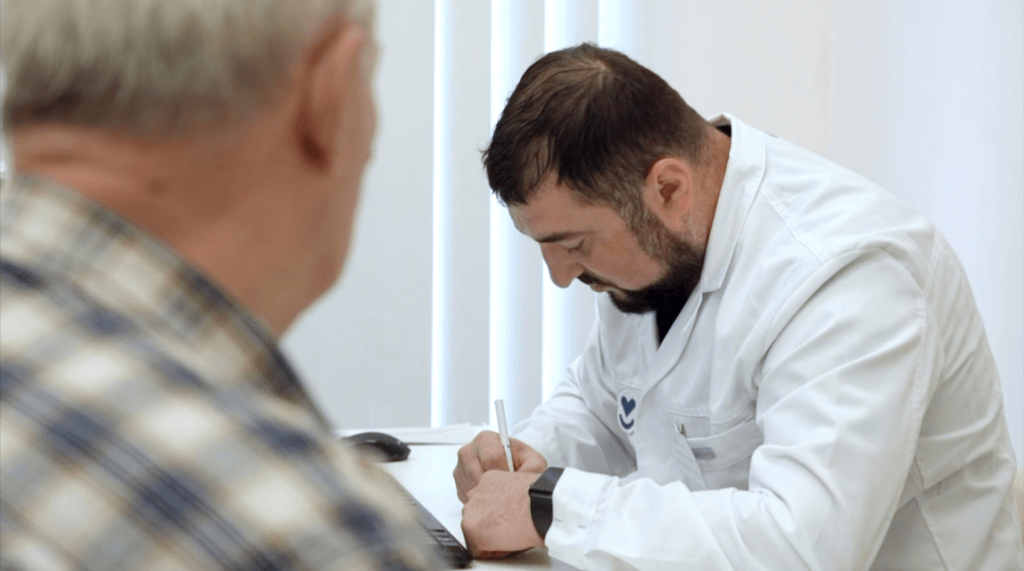Case taking in homeopathy is very important because it helps us understand each person. Every patient is unique, and their symptoms show not just physical problems but also mental and emotional states. That’s why case taking matters in homeopathy.
You’ve likely heard the saying, “A well-taken case is half cured.” It’s true. Good case-taking lays a solid foundation for selecting remedies that treat the whole person. This guide will explain what you need to know about homeopathic case-taking, its importance, and a simple step-by-step process.
What is Case Taking in Homeopathy?
Case-taking is the process of eliciting detailed information about a patient’s condition while observing their physical, emotional, and behavioral attributes. It’s more than just listening to symptoms; it’s about uncovering the deeper dynamics of the individual.
The process involves:
- Listening to the Patient’s concerns in their own words.
- Observing non-verbal cues such as their demeanor, gait, or tone of voice.
- Interrogating or asking pertinent questions to fill knowledge gaps.
Case-taking is both a science and an art. It requires patience, empathy, and keen observational skills to develop an accurate picture of the patient’s overall health.

Why is Case-Taking Important in Homeopathy?
Unlike conventional medicine, which often treats diseases generically, homeopathy provides personalized care. Case-taking is vital because it helps to:
Understand the Whole Person
Homeopathy sees the individual, not just the disease. Case-taking provides insights into the Patient’s life, emotions, and behaviors.
Define the Totality of Symptoms
Case-taking collects all the symptoms, including those unrelated to the primary complaint, informing the remedy selection process.
Determine Root Causes
It identifies underlying factors, such as hereditary tendencies (miasms), emotional shocks, or lifestyle patterns that could be affecting the Patient.
Optimize Outcomes
With accurate data from case-taking, homeopaths can prescribe remedies tailored to the patient, addressing not just symptoms but also underlying imbalances.
Set a Methodical Approach
Well-documented records serve as references throughout treatment, ensuring consistency in follow-ups and refining prescriptions as needed.
Ultimately, case-taking transforms patient care from symptom suppression to holistic healing.

How to Take a Case in Homeopathy
The following six-step framework provides a structured approach to case-taking:
1. Observation
The process starts the moment a patient walks into the consultation room. This stage is about gathering as much non-verbal information as possible:
- Observe their posture, gait, and expression.
- Note unusual traits like anxiety, restlessness, or signs of depression.
- Please pay attention to their attire and whether it reflects discomfort, like overdressing in warm weather.
By observing, you gain preliminary insights into their temperament and potential symptoms.
2. Listening to Complaints
Allow the patient to narrate their complaints without interruptions. Here’s why:
- It helps patients express themselves freely, often leading to the revelation of critical information.
- Refraining from judgment creates a safe space for them to open up.
- After their narration, verify points or ask clarifying questions if needed.
Patients often reveal nuances, such as, “The pain feels better when I lie curled up,” which are important for remedy selection.
3. Interrogation and Cross-Examination
Once the Patient has finished, ask specific questions to fill gaps in their narrative. Some areas to explore include:
- The duration, onset, and progression of symptoms.
- Sensations and modalities, like whether certain factors (e.g., weather, time of day) worsen or improve the issue.
- Concomitant symptoms or any additional signs accompanying the main complaint.
This phase allows you to detail the location, sensation, and triggers of symptoms while cross-verifying information.
4. Clinical Examination
A thorough physical examination complements the subjective data. For instance:
- Look for swelling, discoloration, or abnormal growth.
- Take note of features like temperature sensitivity or unusual odors.
Physical signs offer valuable clues about the Patient’s condition that the Patient or their bystanders may overlook.
5. Laboratory Testing (if needed)
If a diagnosis is unclear, laboratory investigations can confirm observations or uncover hidden conditions. These tests help refine treatment plans and prognosis evaluations. For example:
- A blood test might verify chronic inflammation.
- Imaging could reveal previously undetected structural abnormalities.
6. Diagnosis and Symptom Evaluation
Now, integrate all the information collected to create a comprehensive picture:
- Determine if the condition is acute, chronic, or recurrent.
- Identify peculiar symptoms, such as specific odors or unusual mental states, that distinguish the individual’s case.
- Evaluate symptoms for their intensity and relevance, prioritizing mental and emotional characteristics.
This holistic picture enables a personalized prescription that adheres to homeopathy’s principle of “treating the person, not just the disease.”

The Step-by-Step Process of Case Taking
1. Establishing Rapport with the Patient
Creating a comfortable and trusting environment is crucial. Patients should feel free to express their symptoms, emotions, and personal experiences without hesitation. A homeopath should listen attentively and ask open-ended questions to encourage detailed responses.
2. Chief Complaint (CC)
The first step is to record the Patient’s primary reason for seeking treatment. This includes:
- Nature of the complaint.
- Duration and intensity.
- Any associated symptoms.
- Factors that improve or worsen the condition (modalities).
3. History of Present Illness (HPI)
Understanding how the illness developed over time is essential. Questions may include:
- When did the symptoms first appear?
- What events, emotions, or lifestyle changes preceded the illness?
- How has the condition progressed?
- Any past treatments and their effects?
4. Past Medical History (PMH)
- Previous illnesses, infections, or chronic conditions.
- History of surgeries, injuries, or hospitalizations.
- Effects of previous treatments, including allopathic medications.
5. Family History
Homeopathic cases are influenced by genetic predisposition. Homeopaths will ask about relatives who have had chronic illnesses such as cancer, diabetes, or heart disease.

6. Mental and Emotional State
Mental and emotional well-being significantly influence homeopathic prescriptions. Key aspects include:
- Anxiety, depression, fears, and phobias.
- Stress triggers and coping mechanisms.
- Emotional sensitivity and reactions to situations.
- Relationships with family, friends, and society.
7. General Symptoms
These provide insight into the patient’s overall constitution and vitality. They include:
- Appetite and thirst patterns.
- Sleep habits and disturbances.
- Sensitivity to temperature (prefers warmth or cold).
- Energy levels throughout the day.
- Sweat patterns and odor.
- Bowel and urinary habits.
8. Physical Generals
Physical characteristics of the patient can offer clues to remedy selection:
- Skin condition (dry, oily, rashes, discoloration).
- Body structure and posture.
- Any physical abnormalities or noticeable traits.
9. Particular Symptoms
Specific organs and systems may cause symptoms, including:
- Respiratory system (cough, asthma, shortness of breath).
- Digestive system (indigestion, constipation, bloating).
- Circulatory system (blood pressure issues, palpitations).
- Neurological symptoms (headaches, dizziness, tingling sensations).
10. Modalities (Aggravation and Amelioration)
Homeopathy emphasizes what makes symptoms better or worse:
- Does the condition worsen with movement or rest?
- Are symptoms affected by temperature, weather, or time of day?
- Is there a pattern of worsening at specific times (morning, night, before meals, etc.)?
- Are emotional states linked to symptom changes?
11. Desires, Aversions, and Cravings
Food preferences and dislikes can play a key role in remedy selection. Some common considerations include:
- Desire for sweets, salty, spicy, or sour foods.
- Aversion to certain foods.
- Thirst preference (cold, warm, or no thirst at all).
12. Sleep Patterns and Dreams
- Sleep position and disturbances (insomnia, nightmares, excessive sleepiness).
- Recurring dreams or themes (falling, flying, being chased, etc.).
- Quality of sleep (restful, interrupted, or light sleeper).
13. Female Health History (for Women)
For female patients, case-taking includes a detailed inquiry about reproductive health:
- Menstrual cycle details (regularity, pain, flow, PMS symptoms).
- History of pregnancy and childbirth.
- Menopausal symptoms and hormonal changes.

14. Sensations and Peculiar Symptoms
Homeopathy gives great importance to strange, rare, and peculiar symptoms. These can be highly individualized and help differentiate remedies.
- Unusual pains (e.g., burning, shooting, stitching sensations).
- Symptoms that move from one part of the body to another.
- Odd desires (e.g., craving chalk, earth, or ice cubes).
15. Observations by the Homeopath
Apart from verbal responses, a homeopath also notes:
- Facial expressions and body language.
- Voice tone and speech pattern.
- Posture, movement, and gestures.
Techniques to Improve Case-Taking
a) Open-Ended Questions
- Ask, “Can you describe your pain in detail?” Instead of asking, “Do you feel pain?”
- Open-ended questions help patients express their symptoms more accurately.
b) Repeating and Confirming Information
- Summarizing what the Patient has said ensures accuracy and clarity.
- It helps avoid misunderstandings.
c) Maintaining Proper Records
- A well-documented case file helps in future follow-ups and treatment adjustments.
d) Time Management
- Case-taking should be detailed but not overly lengthy.
- Skilled practitioners learn to extract key information efficiently.

Case Analysis and Repertorization
Once all details are collected, the homeopath analyzes the case by:
- Identifying characteristic symptoms.
- Prioritizing mental, emotional, and physical symptoms.
- Using a repertory (a homeopathic index of symptoms and remedies) to find the best match.
- Cross-referencing remedies with Materia Medica (a detailed description of remedies).

Follow-up visits and Case Evaluation
Healing in homeopathy is individualized and dynamic. Follow-ups are necessary to:
- Assess symptom changes and response to the remedy.
- Adjust or change the remedy if needed.
- Ensure long-term healing and disease prevention.

Conclusion
Case-taking is very important in homeopathy. By exploring patients’ experiences and feelings, practitioners can understand the reasons behind their health issues. This approach helps in choosing the right remedies and builds a stronger bond between the practitioner and the patient.
As you start your homeopathic practice, keep in mind that good case-taking is essential for effective treatment. Embrace this thorough process to improve your ability to help your patients feel better.
FAQs about Case Taking in Homeopathy
What is case-taking in homeopathy?
Case-taking is the process of gathering comprehensive information about a patient’s physical, mental, and emotional states to identify the most suitable homeopathic remedy.
Why is case-taking considered important in homeopathy?
Good case-taking is crucial because it provides insights into the unique characteristics of each Patient, enabling practitioners to tailor treatments that address the whole person rather than just specific symptoms.
How does homeopathy differ from conventional medicine in terms of treatment?
Homeopathy focuses on individualized treatment based on the Patient’s overall well-being, while conventional medicine often targets specific symptoms or diseases.
What can I expect during a homeopathic case-taking session?
During a case-taking session, you can expect to discuss your medical history, current symptoms, lifestyle, emotional state, and any other factors that may influence your health.
How long does a typical case-taking session last?
A typical case-taking session can last anywhere from 30 minutes to over an hour, depending on the complexity of your case and the details shared.




